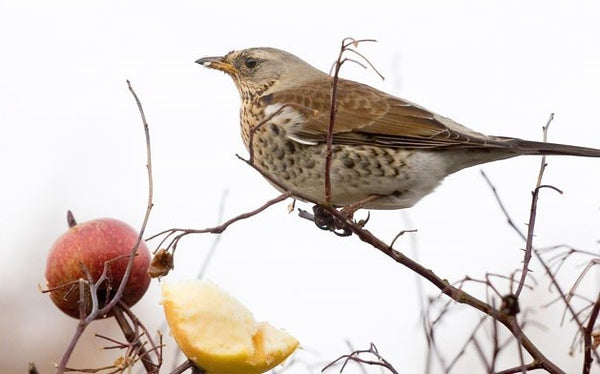Friday, 26th August 2016
Birds are about to fight it out in the UK for "natural" food and shelter during autumn and winter or start their evolutionary migratory flight paths taking them to the remotest parts of the planet, encountering mountains, deserts and the wildest oceans.
Birds fit neatly, broadly speaking, into three main categories: residents (the ones that stay all year round); summer migrants (the ones that stay here only during summer); and the winter visitors (the ones that will only join us for winter).
The quintessentially British garden birds like Blue Tits, Coal Tits, Great Tits, thrushes and Greenfinches are residents and will stay with us all year round. There are plenty of others, too, such as the Greenfinch and who could forget the Nation’s favourite, the Robin? However, those "sedentary" birds we claim as "British" may actually be a continental cousin arriving from as far east as Russia. In other words, you could soon be feeding a Russian Starling or a French Greenfinch.

The winter visitors (apart from the continental cousins mentioned above) are generally much easier to spot. The most celebrated to see are the winter thrushes, Redwings and Fieldfares overwintering in the UK from Scandinavia and Iceland. These birds won't generally take bird feed unless there's something in the garden to initially attract them - something like wind fallen apples or the iconic red berries bursting with goodness. That said, a hard frost or heavy snowfall may send them scurrying to a well-managed bird table - particularly if it's stocked with soft food like Golden Chorus.
The champion summer migrant must be the enigmatic Swallow. My favourite description of a Swallow came directly to me from Bill Oddie back in April 2015: "They look good at a distance – sleek, streamlined miniature jet planes – and they look good close up –a charming red bib, eyes as big and dark as a baby seals, a beak set in a permanently benign smile, and a cheery jumble of a song that is the very definition of the word “twitter”." I can't beat that description. Suffice to say that it’s Bill's favourite bird.
The irony is that Bill can't feed his favourite bird because it doesn't eat garden bird food - its diet consists entirely of flying insects. The insects supply a natural, high-protein diet and the skill of feeding on-the-wing is, of course, entirely essential to learn (and learn quickly!) if a juvenile Swallow is to join its cohort in Southern Africa and zip through the legs of a giraffe before Christmas. The insects provide some moisture; however, rehydration is a matter of skimming the surface of the water.
Swallows do something fascinating before they embark; they gather in large numbers - a "flight" of Swallows - in September. Once they've assembled and conducted their preflight checks they'll head off together. They won't return to the UK until early April. Before they return, however, they will have soared through a mountain pass high in the Pyrenees, skimmed past the nostrils of hippos in Africa and flown blind through sandstorms, barely a foot above the dunes in the Sahara desert. Probably.
Isn't wildlife remarkable?
Written by Simon H. King


